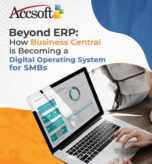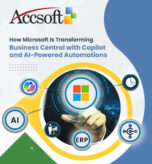
Being the backbone for most modern businesses, ERP systems must deal with complex operations but, at the same time, must be able to address the requirements that vary according to an organization. Personalization here steps in, making a one-size-fits-all system become a customized solution that drives efficiency, productivity, and growth.
Why Personalization Matters
Every business is unique – its processes, objectives, and pain points vary. No one-ERP system specifically designed for a generic industry, or any generic business type can cater to the minute needs of different organizations. Personalization bridges that gap by facilitating the above aspects:
Efficiency:
Customized workflows reduce redundancy and smooth out transactions, allowing employees to focus squarely on core tasks.
User Acceptance:
Personalization enables proper interfaces and pertinent features, thereby making the system usage-friendly and easing resistance from the users, which enhances user satisfaction.
Enabling Growth:
Personalization makes the ERP system grow with the business and includes an aspect of incorporating new processes, markets, or product lines.
Maximizing ROI:
Personalization is business-specific and means that the correct usage of resources will come to accompany a fast return on investment.
ERP personalization can be anything from simple changes to extensive customization, all depending on what the organization needs, such as:
- Simple Configuration
It simply is the changing of the standard features of the ERP system, like defining a user role or creating workflows and configurations for a dashboard. - Complex Customization
Creating custom modules and integrating with third-party apps or even tweaking the code.
Benefits: Suitable for companies with complicated operations or industry-specific needs, advanced customization can go further in line with business objectives. - Tailored User Experiences
What it entails: Role-based dashboards, custom reports, and tailored interfaces.
Benefits: Increases productivity by exposing users to relevant data and tools. - Industry-Specific Solutions
What it is: Utilizing industry-specific ERP modules, for example, manufacturing, retail, or healthcare.
Benefits: Direct challenges in the industry are met, and fewer changes can be required.
Technologies that Facilitate Personalization
Due to the innovations in technologies applied, it is now much easier and more efficient to personalize ERP systems. The enabling key includes:
Cloud Computing:
A cloud-based solution to the implementation and update of personalized features of the ERP system.
Artificial Intelligence and Machine Learning:
AI-based analytics for insights toward process optimization and machine learning-based models for predictive personalization.
Low-Code Platforms:
The low-code platform enables businesses to develop applications and workflows with less coding, which reduces development time and cost.
API Integration:
Links the ERP systems with other applications within the business for better functionality and smooth workflows.
Problems of ERP Personalization
Personalization brings many benefits, but it also presents some problems. Among them are:
Cost Implications:
Advanced customizations can be costly in terms of development and post-development maintenance.
Complexity:
High personalization may make it harder to update or scale the system.
Time Investment:
Usually a longer time with extensive hours on development and testing of personalized ERP.
Vendor Lock-In:
The many modifications made will tend to commit the business to vendors, restricting the business flexibility in the future.
Best Practices for Best ERP Personalization
In achieving maximum benefits for personalizing the ERP, the companies should:
Evaluate Requirements in Detail:
Carry out a detailed analysis of the requirements to find where actual personalization is required.
Scalability Should Be Guaranteed:
Customizations should be designed to grow along with business.
Stakeholder Engagement:
Involve end-users and key stakeholders during the process so that it addresses real needs.
Work with a Seasoned Consultant or ERP Vendor:
While designing and implementing customizations, always collaborate with experienced professionals.
Documentation:
All the changes that are made are well documented for simple troubleshooting, upgrading, and training.
Conclusion
Personalization is no longer a luxury; rather, it has now become a necessity for firms seeking growth and winning the market battle. As customization unlocks organizations to reach their full potential, it also facilitates innovation and is always in step with progress, so do they do their ERP solution for specific business requirements. It’s always about finding that workable balance between personalization and practicality by either doing basic configurations or through advanced customizations. In this light, an ERP system becomes more than just a tool but a strategic enabler of business success.







